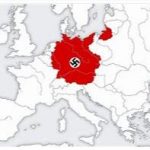The German railway communications, whose network in 1937 stretched over about 70,000 km., Are characterized by high speeds, among the highest in the world, which can be reached on the main lines.
As for electrification, we recall the Stuttgart-Augusta, completed in 1933, the Augusta-Nuremberg and the Halle-Cologne-Magdeburg. The vast plan for the construction of 7800 km. of motorways is already well underway: at the beginning of 1937 1200 km were open to traffic. (Magdeburg-Berlin-Szczecin trunks; Hannover-Brunswick; Gotha-Weimar; Frankfurt-Mannheim, etc.).
Waterborne communications, of great importance for the transport of heavy goods, have undergone no minor changes as the network of waterways has not only been extended but also improved. Completion of the work plan, which has already been partially completed, will make Germany’s waterway network even more efficient. Work is underway to connect the Weser to the Elbe, extending the already existing Mittellandkanal in which the new port of Brunswick was inaugurated in 1935. A new arrangement of the Ludovico Canal, the oldest canal in Germany, is planned, which will join the Rhine to the Danube. The new Adolfo Hitler canal will depart from the Oder, while the Aachen Canal and the Saar-Palatinate Canal will originate from the Rhine.
Merchant Navy (p. 700). – As of June 30, 1937, the German shipping was made up of 2191 ships per ton. gross 3,937,241; there is therefore a short reduction compared to the consistency of 1930: 2157 ships per ton. gross 4,229,235. Steamships predominate in this fleet: 1470 for 3.050.546 tons; there are 715 motor ships for 877.370 tons. gross and only 6 sailing ships for 9325 tons. (among these ships a not large number of tanks: 27 of unit tonnage exceeding 1000 tons for a total of 159,995 gross tons; from this point of view the German merchant navy is in 10th place in the world while for the consistency it occupies 50). The share of ships under the age of five rose to 12.7% (compared to 18.3% in Japan which ranks first).
In 1934 a Traffic Council was created chaired by the Minister of Transport and composed of delegates from all the federations representing the different communication systems: railways, post offices, aviation, forwarding agencies, inland navigation and maritime navigation. The two navigations have been clearly separated; the representation of the maritime section includes various specialty groups: shipowners; shipowners in coastal shipping; agents and freight forwarders; pilots; port managers, etc.; each group has its own protective organization. The representation aims to push the national shipping towards an increase, eliminate internal competition, develop tramping German who has remained behind in relation to the other navies; it also proposed to implement that further decentralization of the large companies which was then completed. In fact, in 1933 the gross receipts of the German navy represented approximately 42% of the figure of 1929; this element indicated his unhappy situation; the gigantic companies created brightly demonstrated their scarce vitality. So that the idea of giving independence to some services managed by the Hapag Lloyd group was gradually taking shape, an idea that in the course of 1931 was gradually implemented, entrusting all the services of South America to Hamburg Süd, those of Africa to Deutsche Afrika Linie; those of the Levant at the Deutsche Levant Linie in Hamburg and at the Atlas-Levant Linie in Bremen.
According to Answerresume, the development of social assistance in favor of seafarers has been remarkable; higher wages, better housing, higher standard of living. The organization “Kraft durch Freude” has created a special cruise fleet for the after-workers; the first ship launched is the 24,000-ton Wilhelm Gustloff.
The development of shipbuilding was very active; from a quarterly average (ships launched) of 101,594 tons. in 1925 it had gradually increased to 10,549 tons. in 1933; but the following year the average rose to 18,433 and then, in the following years, to 56,586.94,995, 107,454 tons. The recovery is mainly due to orders for foreign shipping, taking into account the known currency restrictions; only in this way is it possible to defrost the credits.
Not much is known about tax assistance. In September 1932, 12 million marks were awarded for demolition prizes; in March 1933, another 20 million to offset the effects of the devaluation of the English and Scandinavian currencies; in September 1933, participation by the tax authorities, to the extent of 20% of the cost, up to a maximum of 20 million marks, in the modernization of the ships.
Civil aviation. – The progress of the already efficient German air network is indicated by the mileage figures. of flight, which rose from 9,728,134 in 1934 to 16,376,102 in 1935, and of passengers transported (94,872 in 1933; 231,000 in 1935. The internal network has naturally thickened, but the efforts of the commercial air navigation policy of the Germany go to South America and the Far East. Since 1934, Luft-Hansa has inaugurated a regular air mail service to South America, while in the Far East it operates the Shanghai-Nanjing-Shan-fu-Pao line. -tow and the Beijing-Hanow.
Administrative division. – Germany continues its work of territorial unification by gradually removing their raison d’etre from the ancient states. In October 1933, the two states of Mecklenburg Strelitz and Mecklenburg Schwerin were reunited into one with an area of 16,056 sq km. with a population of 805,213 residents In 1937 the provinces of Starkenburg, Upper Hesse and Rhine Hesse were suppressed and their administration merged with that of the neighboring provinces. Likewise, the title of free city to the Hanseatic cities was suppressed and among these Lübeck is now an administrative part of Prussia. Following the plebiscite of January 13, 1935, the territory of the Saar was returned to Germany which, with the annexation of March 13, 1938, incorporated the Austrian republic, today one of the Reich Länder with the name of Ostmark. Within these new borders, Germany has an area of approximately 552,654 sq km. with a population of 75,000,000 residents (estimate as of December 1937).











